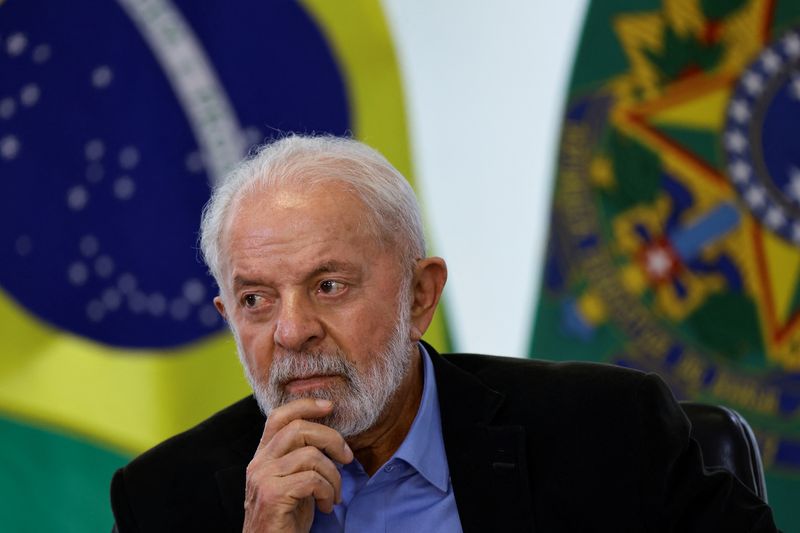By Peter Frontini and Marcela Ayres
SAO PAULO/BRASILIA (Reuters) -Brazilian President Luiz Inacio Lula da Silva signed a decree on Wednesday establishing a continuous inflation target starting in 2025, with quarterly accountability by the central bank.
The decree empowers the National Monetary Council (CMN), the country's top economic policy body, to determine the target. In a subsequent meeting on Wednesday, the CMN confirmed the 3% official goal, with a tolerance range of plus or minus 1.5 percentage points.
The decision follows intense criticism from leftist Lula on the target level last year, arguing it was too low and required a restrictive monetary policy, thus hindering the economy.
However, in June 2023, his government announced that the 3% target would be continuous, although the formalization of the new system had been pending a presidential decree.
When asked if this move solidified Lula's support for the target and could help reduce rising inflation expectations, Finance Minister Fernando Haddad said it was necessary to pay attention to the government's decisions, not the debates, stressing that Lula's commitment to the issue was made clear last year.
Haddad, who is a member of the CMN along with the planning minister and the central bank governor, told reporters that the new system effectively frees the government from setting the official goal annually and, along with the government's fiscal rules, "establishes a new macroeconomic horizon for Brazil."
Until now, the CMN had set annual inflation targets to meet each calendar year.
But Lula's economic team advocates that pursuing inflation targets within a continuous timeframe allows a longer-term approach that provides more room to accommodate price shocks without requiring monetary tightening.
According to the decree, starting in January, the target will be considered missed if annual inflation deviates for six consecutive months from the range of the respective tolerance interval.
In such cases, the central bank will issue an open letter to the finance minister explaining the reasons, necessary measures to bring inflation back to target, and the expected timeline for their effectiveness.
The decree also mandates the central bank to begin publishing a quarterly monetary policy report, "which will include the performance of the new inflation target framework, the results of past monetary policy decisions, and the prospective assessment of inflation."
The change in the timeframe to assess the inflation goal's fulfillment was announced a year ago, but it hinged on the presidential decree.
In a statement, the Finance Ministry said that the new regimen allows the anchoring of inflation expectations in longer horizons, adding that it shows the country's commitment to low and steady inflation.
Now, any changes in the target would need to be announced at least 36 months in advance.

When asked earlier on Wednesday if central bank director of monetary policy Gabriel Galipolo would be chosen to head the central bank once Roberto Campos Neto's term as governor ends in December, Lula said he is not yet focusing on the matter.
Now in his third non-consecutive term, Lula said the central bank's autonomy has always been respected in his previous administrations, but reiterated criticism of the current benchmark interest rate of 10.5% given the annual inflation rate of 4%.